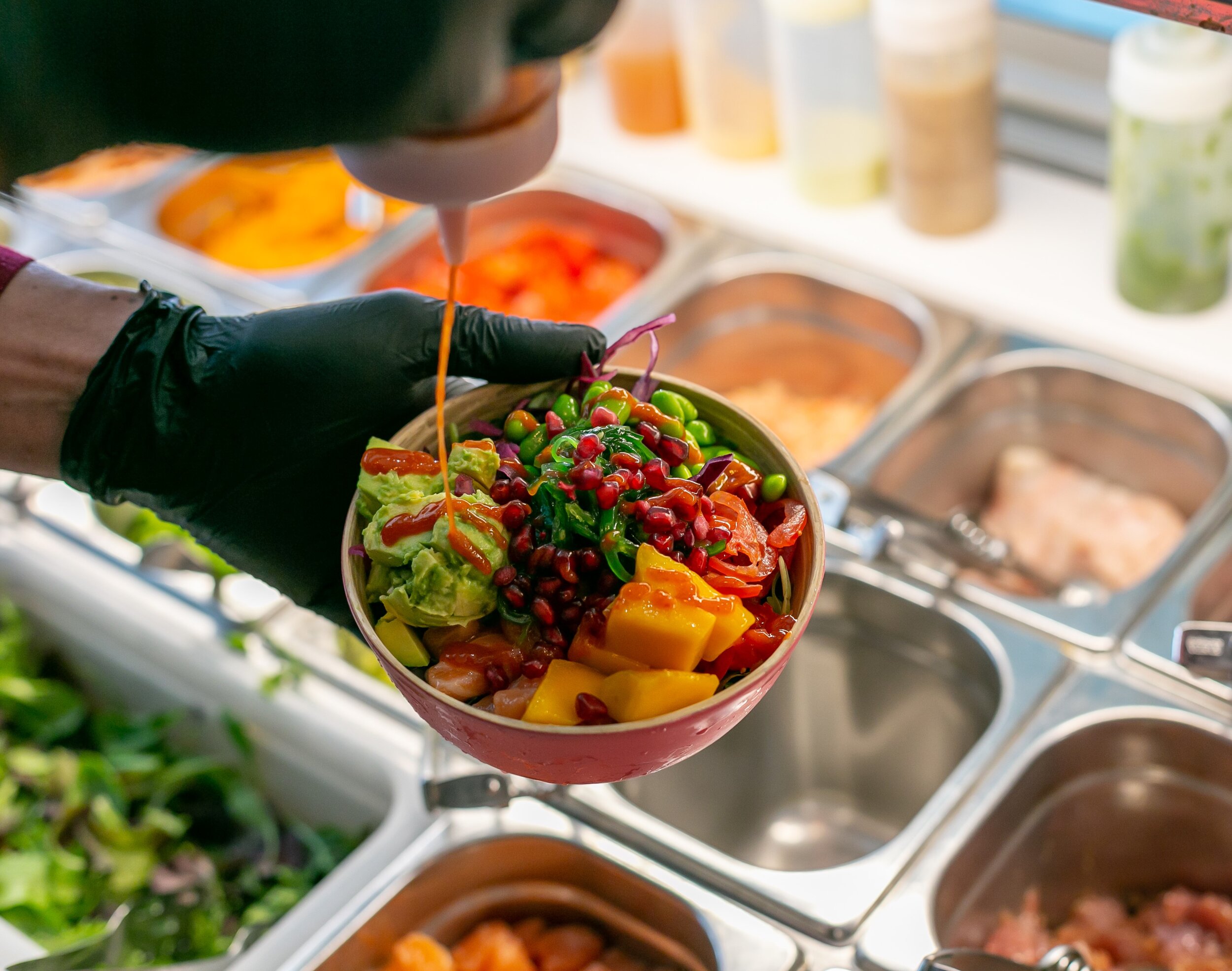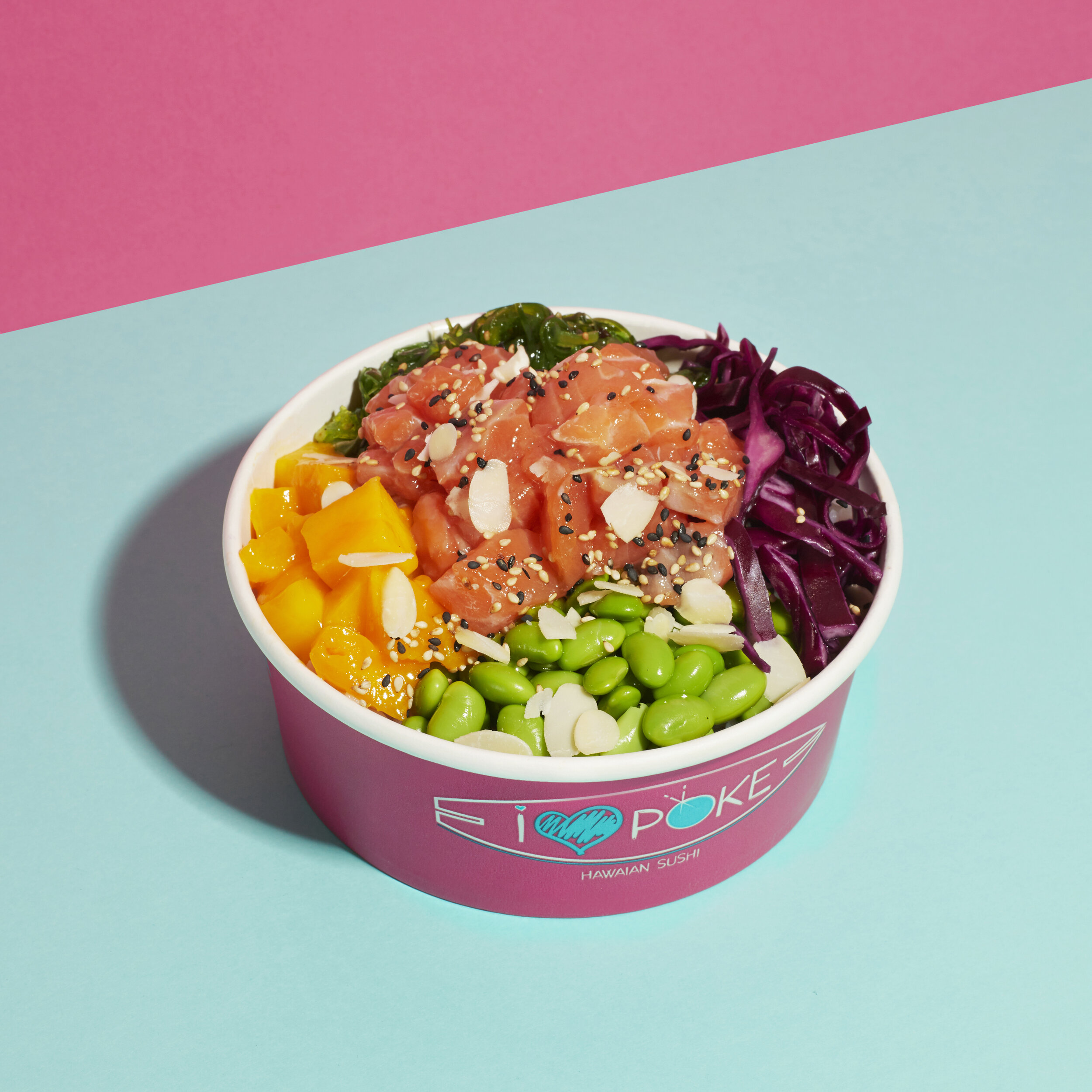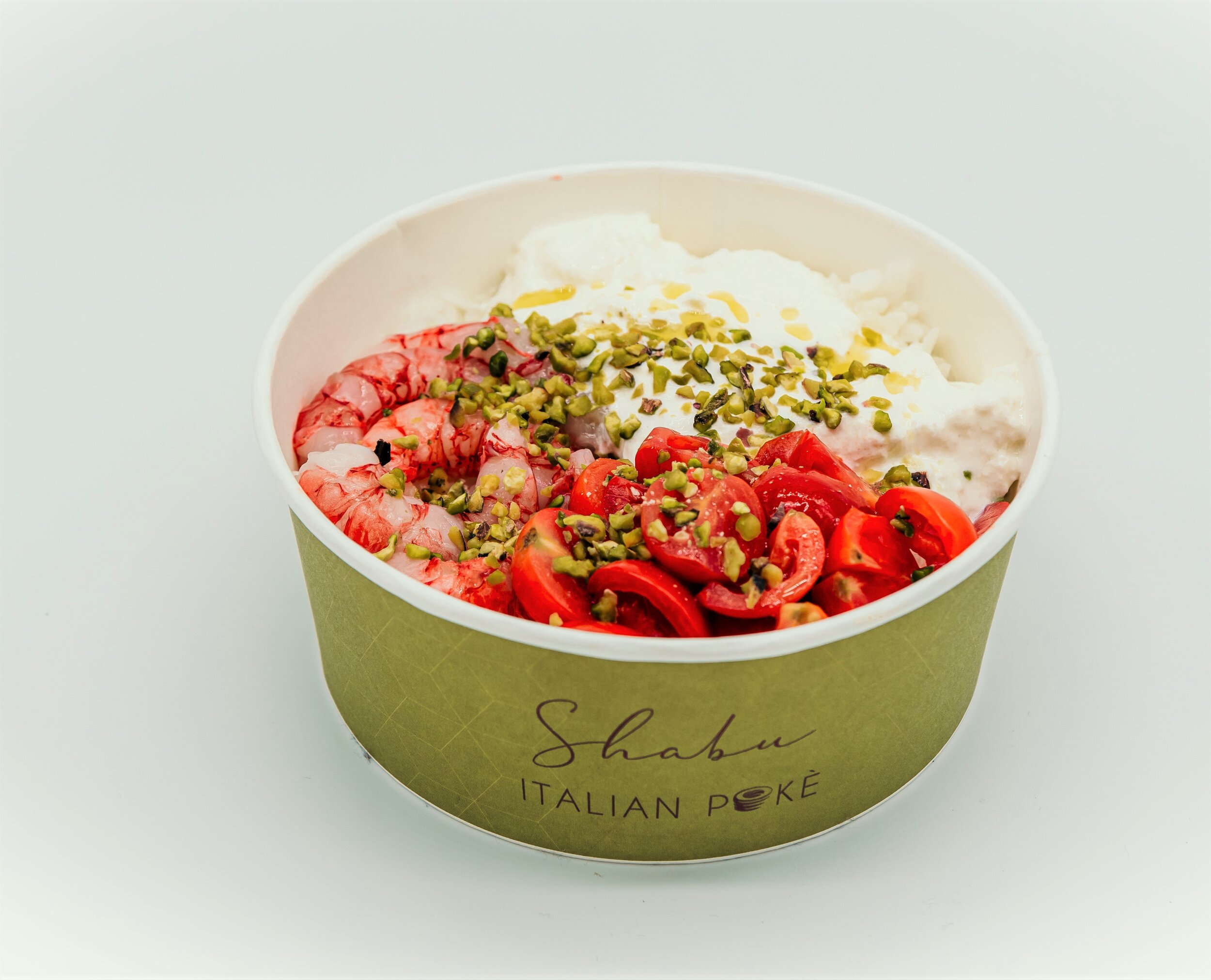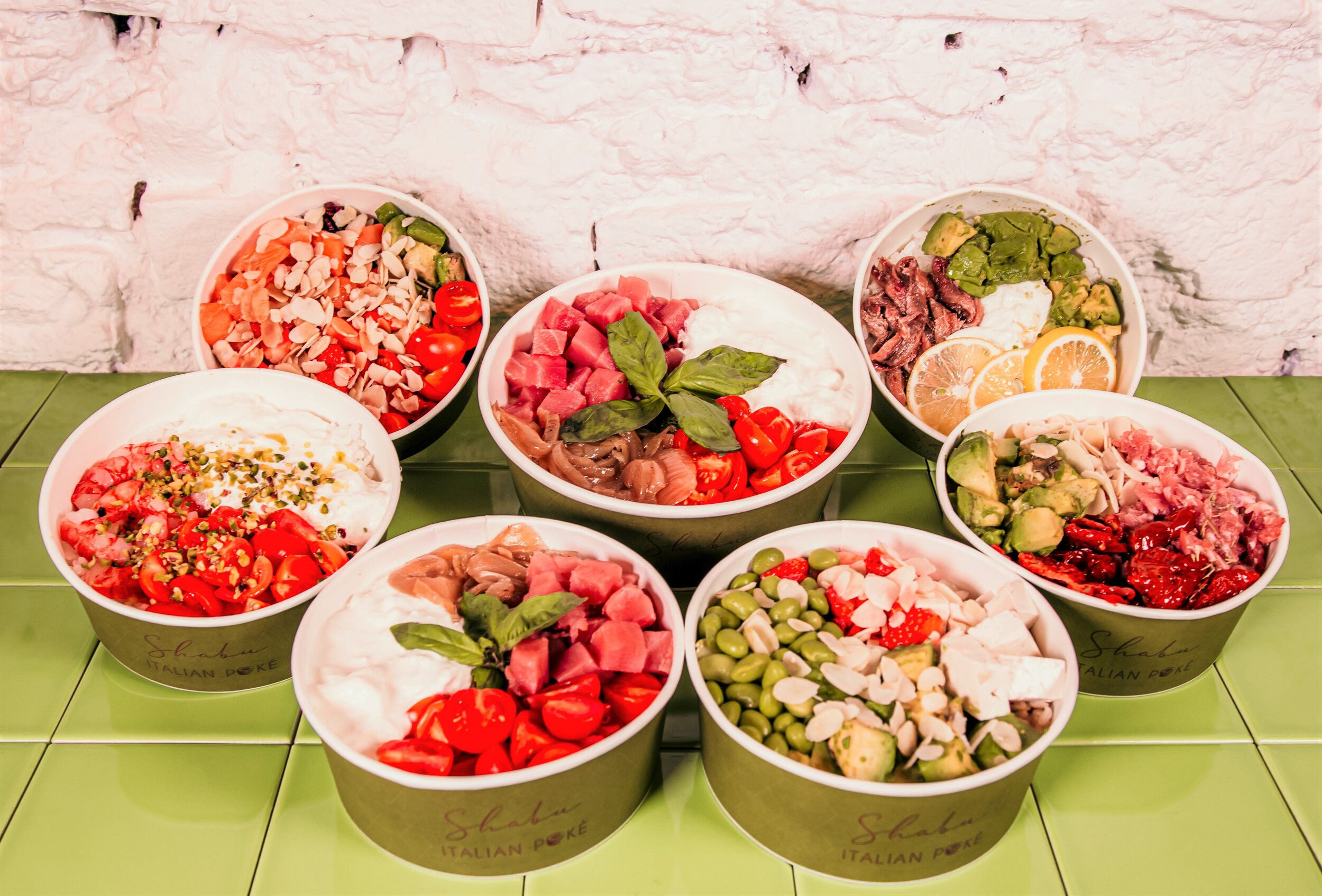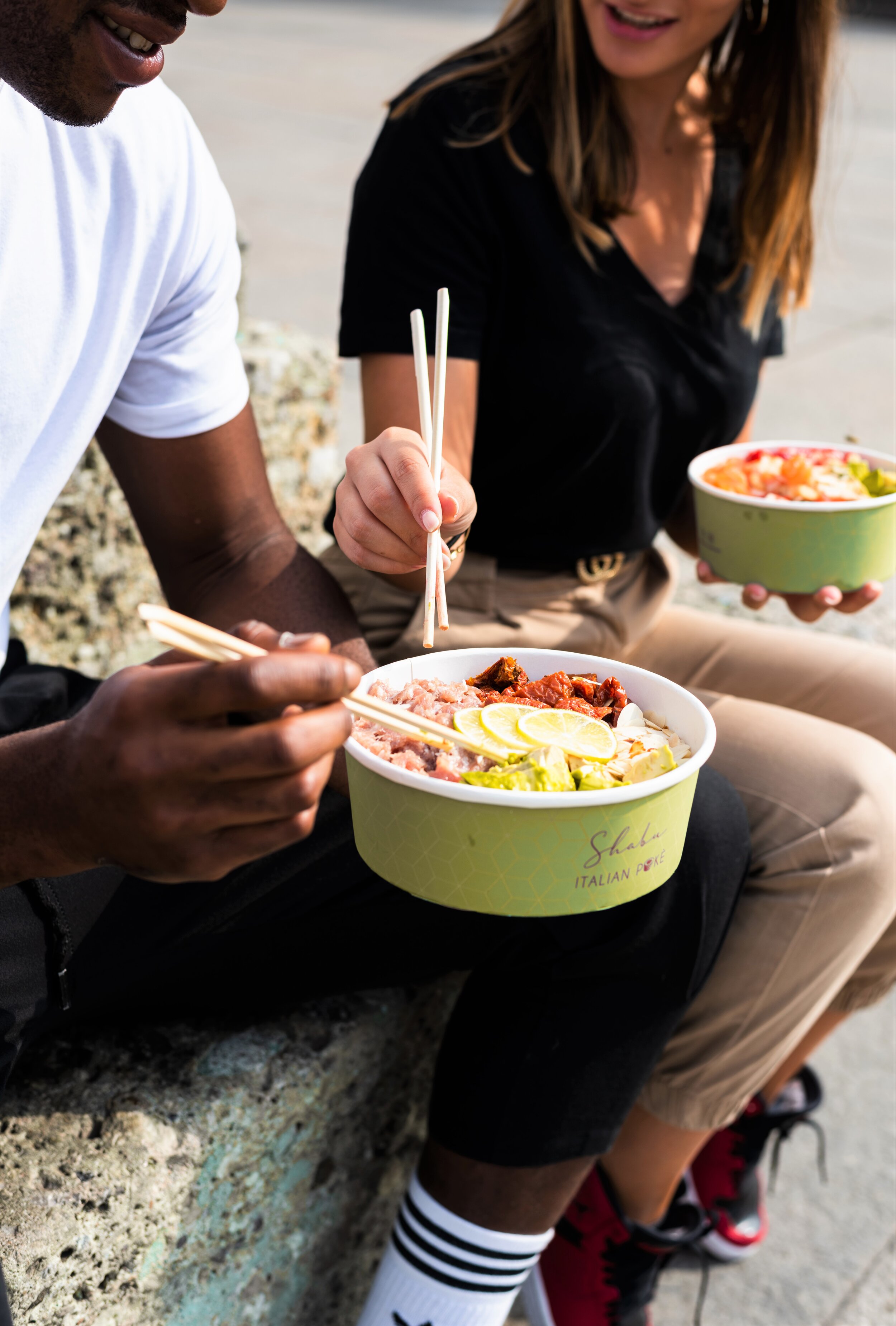The Poke Revolution in Milano
Versione Italiana
Il Poke è attualmente uno dei trend più fiorenti nel business della ristorazione, ma in realtà nasce come umile piatto tradizionale della cucina hawaiiana. Il poke, che in hawaiiano significa “affettare” o “tagliare a pezzetti”, si è affermato inizialmente come presenza fissa nell’alimentazione hawaiiana degli anni ’70. Si crede che fosse già consumato dai native polinesiano, secoli prima dell’avvento degli occidentali nell’arcipelago. Il poke tradizionale hawaiiano si compone di pesce fresco servito con vai condimenti quali sale marino, kukui (anche nota come noce delle Indie), alghe e altre piante marine edibili. Il sale marino veniva usato soprattutto per insaporire il poke, ma anche per conservare il pesce.
All’inizio del 2012, il poke ha cominciato a farsi strada in Nord America, i cui ristoranti hanno iniziato a servire sia versioni tradizionali che rivisitazioni di questo piatto. La versione odierna è nota come “poké bowl” (ciotola di poke), e contiene ingredienti disposti in gruppo piuttosto che mescolati insieme; tra i più popolari: avocado, salsa ponzu, salsa teriyaki, salsa sriracha, coriandolo e cetriolo.
Già prima dell’attuale pandemia globale, i ristoranti di poke hanno cominciato a comparire nelle principali città di tutto il mondo, grazie alla peculiarità di questa pietanza di essere molto saporita, sana e relativamente economica. Con la situazione attuale, in cui impera il delivery, il poke si è trasformato in un’opportunità di business ancora più invitante per i ristoratori.
La rivoluzione del poke è inizialmente approdata a Milano grazie a una coppia di giovani imprenditori, Rana Edwards e Michael Nazir Lewis. Michael è nato a Milano e ha una laurea in Economia a Londra e proviene da una famiglia con una storia trentennale nel business della ristorazione. Rana è una newyorkese con una laurea in Farmacia e un master in Nutrizione presso l’università di Harvard oltre a un dottorato in Nanoscienze Biomediche e una grande passione per una cucina salutare. Rana si è trasferita a Milano nel 2015 per perseguire un altro dottorato all’università Bicocca. Arrivata in città, si accorge con disappunto che la sua pietanza preferita qui è introvabile, perciò decide con Michael, di aprire il primo ristorante di poke a Milano, I Love Poké, nel 2017.
Il format “healthy-casual” del poke ha un successo travolgente: I Love Poké conta ora 7 punti vendita a Milano e 14 nel resto d’Italia. Il cuore delle loro operazioni è il loro laboratorio di 1.500 mq situato tra Pioltello and Segrate, che funge da unico centro di produzione e fornisce pesce fresco a tutti gli store italiani.
Rana Edwards of I Love Poke
Con il successo di I Love Poké, sono nate tante altre catene di poke di qualità, ad esempio la rinomata Poke House. Delle dozzine di opzioni disponibili in città, uno che svetta tra gli altri grazie alla sua originalità è Shabu Italian Poke. La filosofia di Shabu Italian Poke è di unire le tipiche poke bowl hawaiiane con i migliori ingredienti della cucina italiana, abbinando intelligentemente i sapori. Shabu utilizza unicamente prodotti di qualità, focalizzandosi sul 0 km e manifestando la diversità regionale dei vari ingredienti Italiani. Alcuni esempi di ingredienti che si possono aggiungere ai poke di Shabu sono pesto alla Genovese, stracciatella di bufala, granella di pistacchio di Bronte, cipolla rossa di Tropea e Pomodorini pachino IGP. Il poke classico è straordinario, con riso venere, salmone, pomodorini Pachino, fragole, scaglie di mandorla e salsa di soia. In ogni caso, io consiglio di osare, e di provare uno dei loro poke regionali, come “La Sicula” con gamberi di Mazara del Vallo, pistacchio di Bronte, stracciatella di bufala, scorza di limone siciliano, pomodorini Pachino e olio extra vergine di oliva di Sicilia. A parte, sono immancabili i bocconi chiamati bombette, come “Il Mancio” con tonno rosso, pomodorini Pachino e pesto alla Genovese.
Con una tale vastità di offerta e l’estrema versatilità e adattabilità a qualunque tipo di palato, non sorprende che il poke stia avendo tanto successo a livello internazionale. Le sue caratteristiche di essere composto da ingredienti generalmente salutari e di poter essere facilmente offerto in alternative vegetariane e vegane, lo rendono una pietanza estremamente apprezzabile ai più. Inoltre, le occasioni d’uso per mangiare poke sono molteplici: è il pasto perfetto per una pausa pranzo di una normale giornata lavorativa, si presta bene per un break consumato al parco o in tante altre circostanze. Inoltre, la tendenza a ricercare sempre più il cibo sano è in crescita in tutto il mondo, e il poke è uno dei piatti che più risponde a questa esigenza, non stupisce perciò che la sua presenza sul mercato sia destinata a crescere sempre più.
Italian - Hawaiian fusion at Shabu Italian Poke
English Version
Poke is now the latest rage in the restaurant business, but it started out as a humble dish of the native Hawaiian cuisine. Poke, which means "to slice" or "cut crosswise into pieces" in Hawaiian, first became a mainstay of the Hawaiian diet in the 1970s. It’s believed that poke was first prepared by native Polynesians centuries before Westerners arrived on the islands. Traditional Hawaiian poke consists of fresh fish served with condiments such as sea salt, candlenut, seaweed and other underwater edible plants. The sea salt was used to enhance the flavor of poke but also helped preserve the fish.
Beginning in 2012, poke started to make its way to North America, with restaurants serving both traditional and modern interpretations of the dish. The modern version is often called a poké bowl, and has ingredients arranged in groups rather than mixed all together. Popular ingredients in modern poke include avocado, ponzu sauce, teriyaki sauce, sriracha sauce, cilantro, and cucumber.
Even before the current global pandemic, poke restaurants began popping up in major cities around the world thanks to its winning formula of great taste, healthfulness and relatively low cost. With the current restaurant climate where delivery is now king, poke is an even more attractive business opportunity for restaurant operators.
The poke revolution first started in Milano thanks to a couple of young entrepreneurs, Rana Edwards and Michael Nazir Lewis. Michael was born in Milano and has a Bachelor’s degree in economy from London and his family has been in the restaurant business for over 30 years. Rana is a New Yorker with a Bachelor’s degree in Pharmaceutics, a Masters in nutrition from Harvard and a PhD in nanosciences for biomedicine and has a strong passion for healthy cuisine. Rana moved to Milano in 2015 to pursue another doctorate degree at Bicocca and was immediately frustrated that she couldn’t find her favorite food in town. So together with Michael, they decided to launch the first ever poke restaurant in Milano, I Love Poké in 2017.
The healthy-casual poke format was a smashing success, with I Love Poké now having 7 locations in Milano and 14 in the rest of Italy. The heart of the operation is their 1,500 square meter laboratory between Pioltello and Segrate which acts as a single production center and supplies fresh fish to all of their locations in Italy. With the success of I Love Poké, many other top quality poke chains have popped up such as the highly lauded Poke House.
I Love Poke
Of the dozens of poke options available in the city, one that stands out of the pack for its originality and taste is Shabu Italian Poké. The philosophy of Shabu Italian Pokè is to tastefully fuse Hawaiian poke bowls with the best ingredients from Italian cuisine. Shabu uses only the best quality products with a focus on 0 km, showcasing the regional diversity of Italian ingredients. Examples of ingredients which can be added to the poke include pesto alla Genovese, stracciatella di bufala and red onion from Tropea. The classic poke is outstanding, featuring black rice, salmon, Pachino cherry tomatoes, strawberries, almond flakes and soy sauce. However, I encourage you to be more adventurous and try one of their regional pokes such as “La Sicula” with shrimp from Mazara del Vallo, pistacchio from Bronte, stracciatella di bufala, Sicilian lemon peel, Pachino cherry tomatoes and extra virgin Olive oil from Sicily. On the side, a must order are their delicious bite-sized bombette such as “Il Mancio” with red tuna, Pachino cherry tomatoes and pesto alla Genovese.
With so many different options and its adaptability to any type of palate, it is not surprising that poke is having so much success. Its characteristics of being made with healthy ingredients with even vegetarian and vegan alternatives make poke one of the most popular dishes, especially with the younger crowd. With the worldwide trend of healthier eating, poke is one of the dishes that best meets this need, and its presence on the market is destined to grow even more.
Shabu Italian Poke


